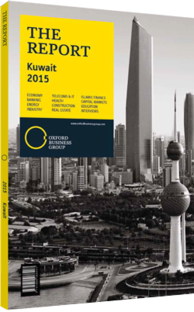Growing energy demand in Kuwait leads to upgrade of generating capacity and alternatives
With one of the highest rates of energy consumption per capita in the world, meeting electricity demand is a pressing concern for Kuwait. According to the World Bank’s World Development Indicators, the country was the fourth-largest consumer of electricity per capita in 2011. A growing economy and an increasingly wealthy population is pushing up demand for power supplies.
BEARING THE COST: While the country’s harsh weather conditions are one key factor behind this level of demand, highly subsidised energy tariffs are likely to be the biggest driver of electricity consumption in Kuwait. The government currently subsidises the cost of electricity by up to 93%, according to Capital Standards’ report on the country’s utilities sector for 2013. According to the report, electricity costs an estimated KD0.038 ($0.13) per KWh to produce, but is charged at KD0.002 ($0.007) per KWh. The price per unit has remained the same since 1966, when the subsidy was first introduced. This cost the government an estimated KD3.1bn ($10.68bn) for electricity subsidies alone in 2013, according to Capital Standards. Reducing electricity consumption and rationalising tariffs is thus of strategic importance to the government. According to the IMF, a proposal for a tariff structure based on usage currently being assessed could generate additional revenues of up to 1% of GDP, reduce usage by up to 20% per year and help cut the cost of subsidies.
MEETING NEEDS: Along with reducing electricity consumption, the government is also starting to invest in installing new capacity to meet rising demand. Kuwait had an installed generation capacity of 15.7 GW in 2013, according to the Arab Union of Electricity. Total output, however, was about 44% of capacity, which was roughly 7 GW each year. The US Energy Information Administration (EIA) reports that peak demand reached 12.1 GW in 2013. According to the Capital Standards report, this represents a 20% increase in consumption since 2009, which is roughly equivalent to 5% each year. According to the EIA, the government has invested in increasing generation capacity by 5 GW through the development of new gas-fired plants and expanding existing oil-fired facilities since 2007. Noting that this has not been adequate to meet demand, the government initiated a major investment programme to build new power projects. In 2013 the government reached financial close on its first independent water and power project (IWPP). The KD2.4bn ($8.27bn) Al Zour North Phase I IWPP is being developed by a consortium led by Engie, formerly GDF Suez, and will add 1.5 GW of capacity by 2017. The plant will also produce almost 20% of the country’s potable water.
BRANCHING OUT: In addition, the government recently signed an engineering, procurement and construction contract to develop a renewable energy power station at Al Shagaya that will include a 50-MW concentrated solar power plant, a 10-MW photovoltaic station and a 10-MW wind power plant. The facility is being developed to test these generation methods in collaboration with the Kuwait Institute for Scientific Research with the broader goal of supporting the country’s plans of meeting 5% of its energy requirements through renewable sources. The 70-MW facility will feed its supplies directly into the national grid.
In addition to the Al Shagaya plant, the Ministry of Electricity and Water (MEW) has also issued a request for expressions of interest for a bigger integrated solar electricity power plant. The Al Abdaliyah Integrated Solar Combined Cycle project, which will be the country’s first solar thermal power plant, will have a total capacity of 280 MW, of which 60 MW will be generated using solar power. The plant is being developed under a public-private partnership model that provides a 25-year concession backed by an energy conversion and power purchase agreement with the MEW.
Although these projects will help boost Kuwait’s generation capacity, it is likely that more will be needed to sustain progress in meeting rising demand. However, the success of the IWPP model has provided a framework for investments and is likely to support significant public and private sector investments into the sector.
You have reached the limit of premium articles you can view for free.
Choose from the options below to purchase print or digital editions of our Reports. You can also purchase a website subscription giving you unlimited access to all of our Reports online for 12 months.
If you have already purchased this Report or have a website subscription, please login to continue.

